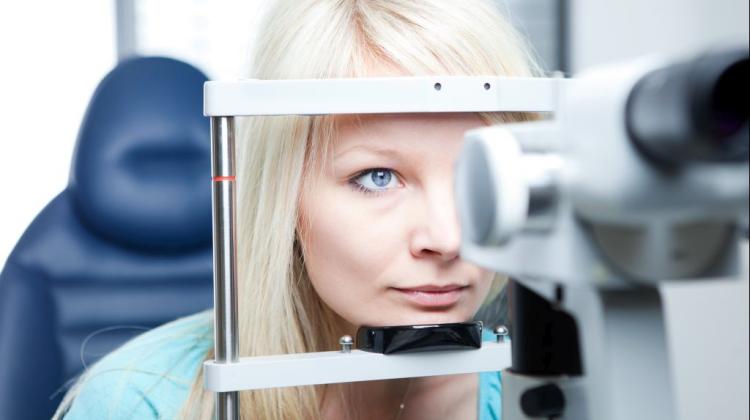The genetic background of glaucoma better understood

International team of scientists, including Polish researchers, selected the genes that could be responsible for the development of one type of glaucoma. The study was conducted on a huge group of more than 10 thousand patients.
Glaucoma is one of the main causes of irreversible blindness. The main risk factor for the disease is elevated intraocular pressure. Other causes of its development remain unclear. Currently, genetic factors are considered as one of the contributing factors.
Glaucoma is actually not a single disease, but a whole group of diseases. They include open-angle glaucoma and closed angle glaucoma (depending on the location of blocked exit of aqueous humor from the eye). In addition, glaucoma may be primary or secondary.
Researchers led by Prof. Tin Aung and Prof. CC. Khor from Singapore studied more than 10.5 thousand glaucoma patients with primary closed angle glaucoma. Is the most common type of glaucoma among Asians, affecting more than half of those with glaucoma. In Poland, however, the disease is less common and affects every sixth person with glaucoma.
The study, which was published in April in the prestigious journal "Nature Genetics", led to identifying five genes associated with the development of this disease. Scientists have also confirmed the participation of three genes identified earlier in the development of glaucoma. Researchers from 24 countries took part in the study, including the Department of Diagnostics and Microsurgery of Glaucoma, Medical University of Lublin.
"Until now, the findings about the genetic background of primary closed angle glaucoma were scarce and few. It was known that its development is affected by the structure of the eye, which, in a sense, is genetically determined. It was said that if a mother had the glaucoma, the child might also have it. But the specifics were not known" - said in an interview with PAP one of the research project participants, Prof. Tomasz Żarnowski of the Medical University of Lublin, and explained that the genetic mechanisms of open-angle glaucoma were far better known.
Researcher from Lublin explained that knowledge of the genetic basis of glaucoma will allow to more effectively recognize the risk of disease. People with a higher risk of glaucoma will know that they must test more often, apply drops. This will allow to control the development of the disease, and manage the symptoms at an early stage.
"Glaucoma is an insidious disease. It develops slowly and we can not recover what it takes. It damages the optic nerve, which we can not restore. The symptoms are usually not severe, so patients are unaware of having this disease, and therapeutic activities start too late" - pointed out Prof. Żarnowski.
Polish scientists involved in the study provided the characteristics of more than 200 patients and their blood samples. These were cases of people with a very well-characterized primary closed angle glaucoma.
This is a continuation of research on glaucoma. Scientists from Lublin previously worked on the genetics of one of the more common types of secondary glaucoma in Poland - pseudoexfoliation glaucoma. Then study allowed to identify a new gene conducive to the development of pseudoexfoliation glaucoma. The results was published in "Nature Genetics" in 2015. "It turned out then that Polish patients were really well selected. And that means high quality of glaucoma counselling. That is why we were asked to continue the research, even though closed angle glaucoma is not leading in Poland" - noted Prof. Żarnowski.
It is estimated that glaucoma affects approx. 60 million people worldwide, and 8.4 million are blind because of glaucoma. Based on the statistics, it can be assumed that in Poland glaucoma affects nearly 800 thousand people.
PAP - Science and Scholarship in Poland, Ludwika Tomala
lt/ zan/ mrt/
tr. RL
Przed dodaniem komentarza prosimy o zapoznanie z Regulaminem forum serwisu Nauka w Polsce.
















